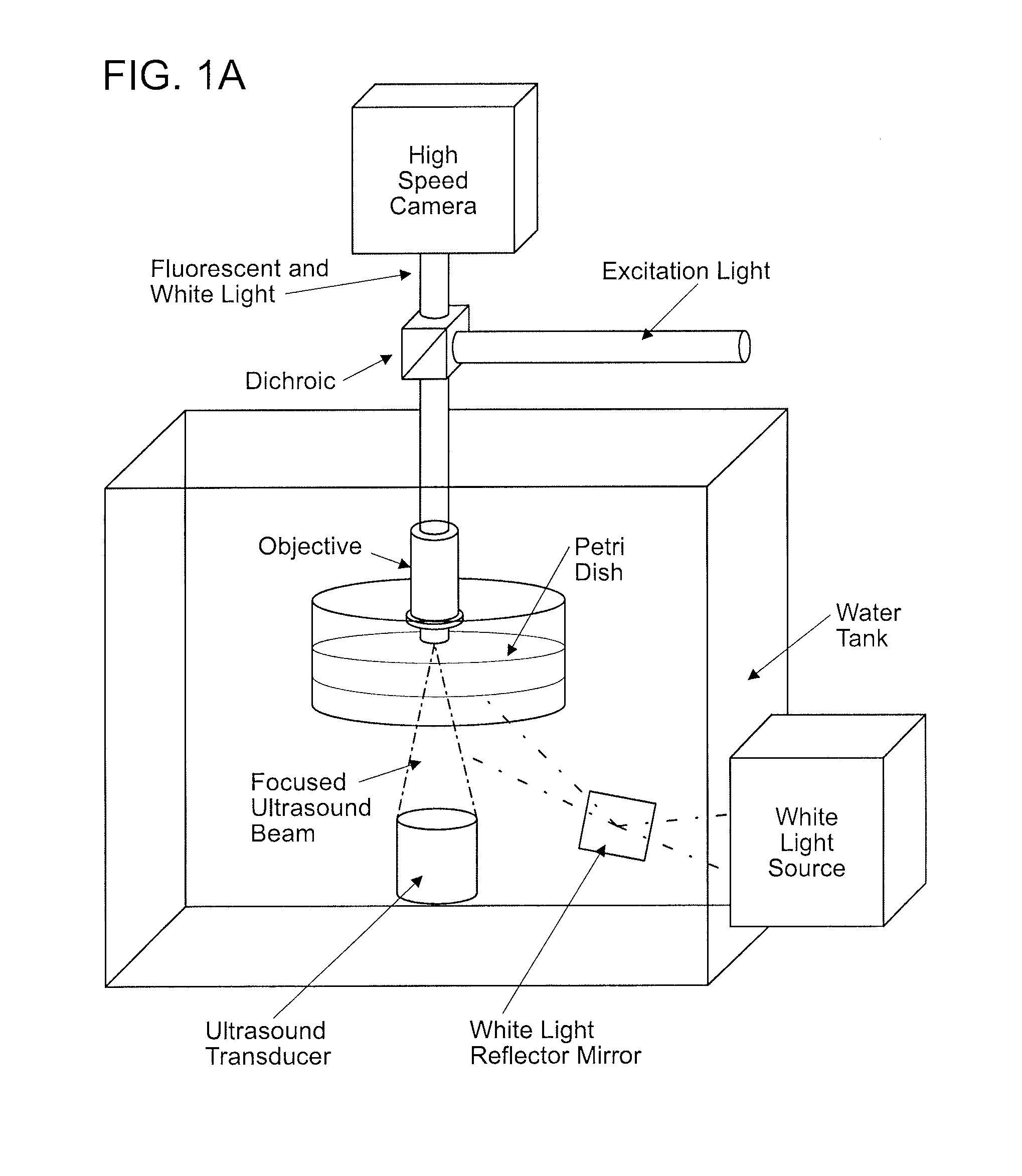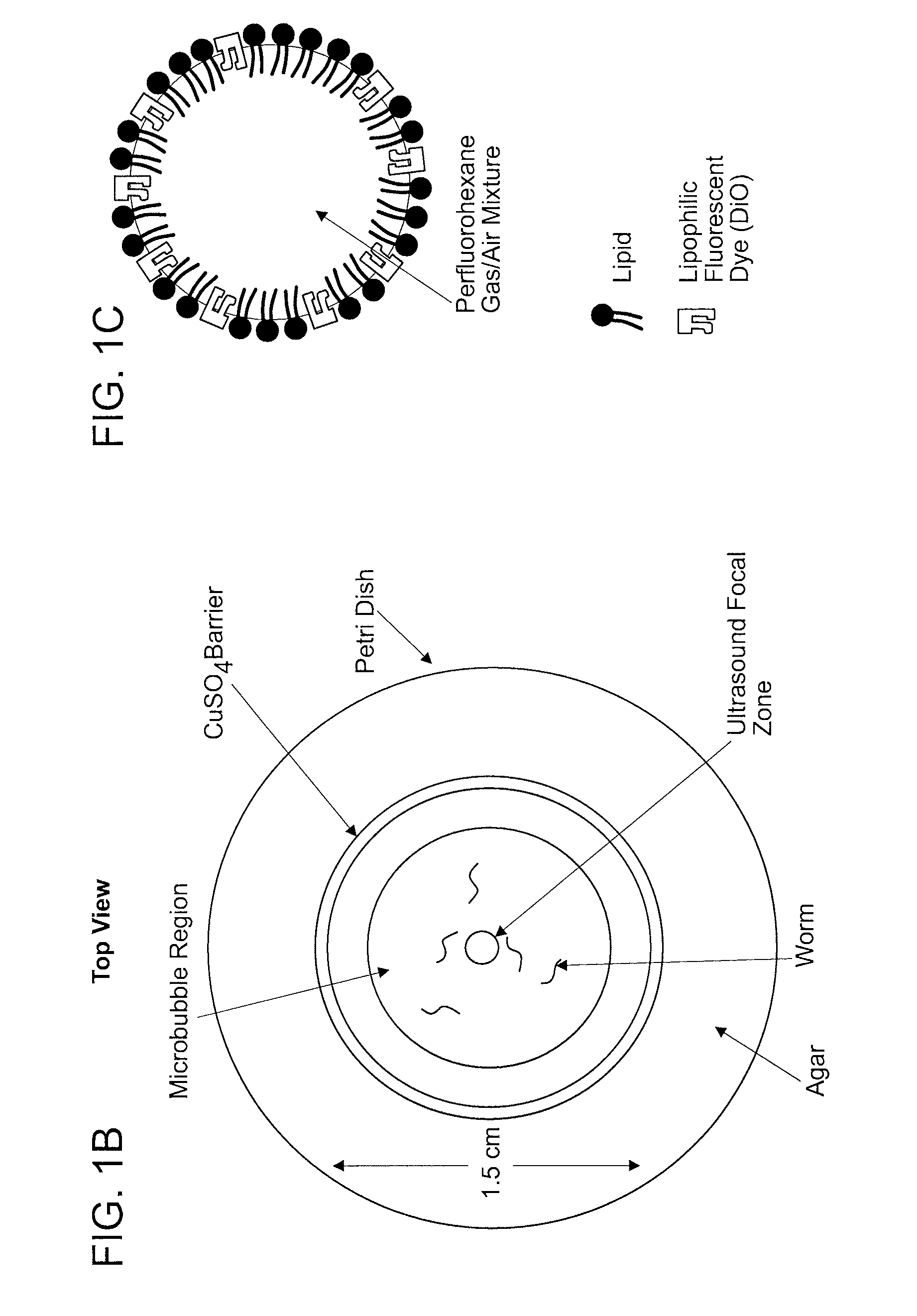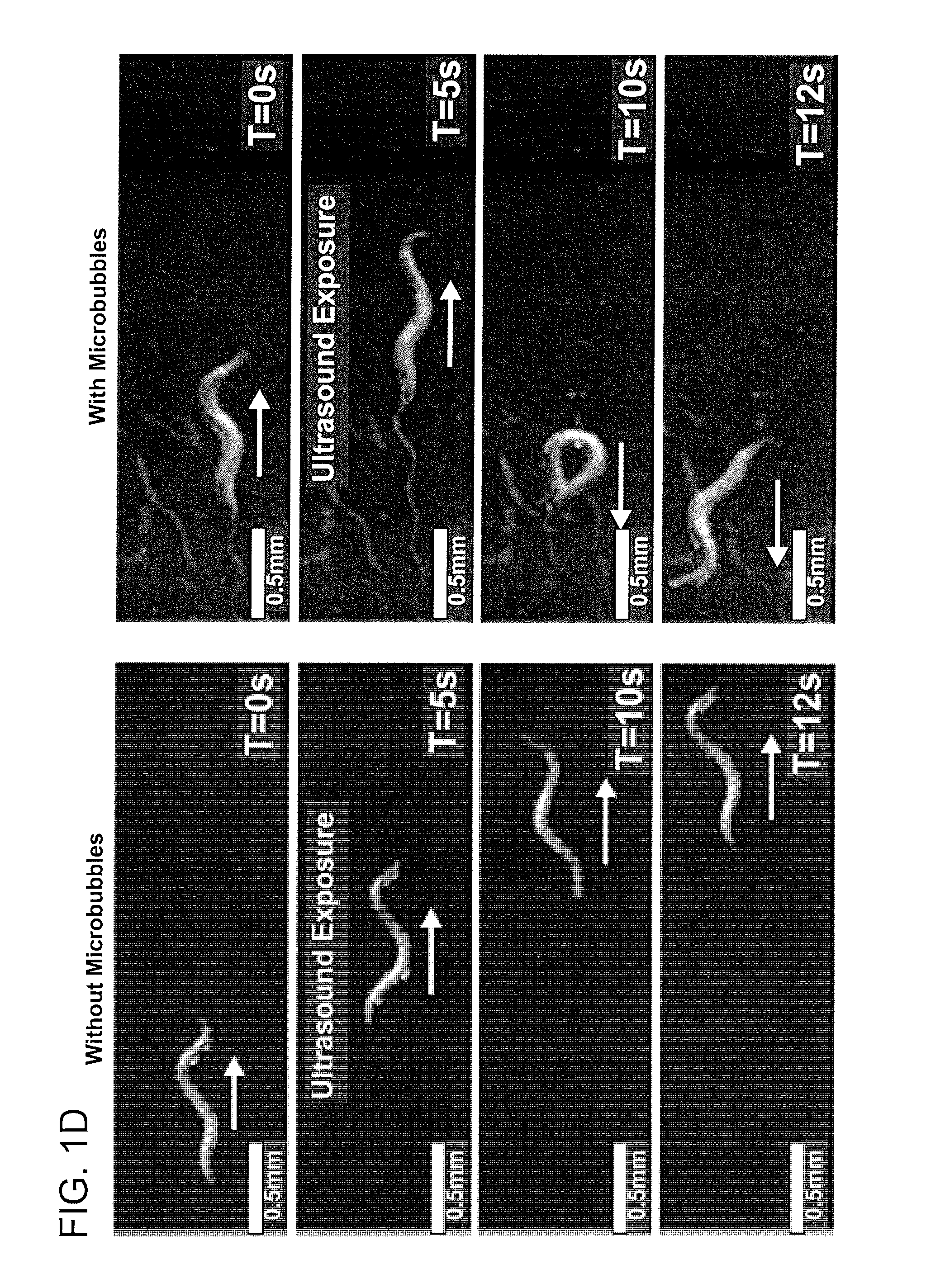Sonogenic Stimulation of Cells
a cell and cell technology, applied in the field of cell and cell stimulation, can solve the problems of difficulty in delivering stimulus to the target neurons present in the deeper brain regions, and achieve the effects of reducing one or more symptoms of a disease, reducing viral replication, and reducing enzyme activity
- Summary
- Abstract
- Description
- Claims
- Application Information
AI Technical Summary
Benefits of technology
Problems solved by technology
Method used
Image
Examples
example 1
Imaging Setup Delivers Ultrasound Waves to Animals
[0079]To investigate the role of ultrasound on C. elegans behavior, Applicants developed a novel imaging setup (FIG. 1A). Low intensity ultrasound was generated from a transducer and focused onto an agar plate where animals were corralled into a small area using a copper solution (FIG. 1B). Applicants' setup allowed for the ultrasound wave to be focused to a 1 mm diameter circular area at the agar surface (FIGS. 8A-8C). The whole setup was placed in a large tank filled with water to facilitate uniform transduction of the ultrasound wave. Previous studies have shown that at high ultrasound intensities (>2.5 MPa) water vapor bubbles would form spontaneously and collapse rapidly, initiating shockwaves that would compromise the integrity of cell membranes (termed “cavitation”) (C. K. Holland and R. E. Apfel, J Acoust Soc Am 88 (5), 2059 (1990); S. Bao, B. D. Thrall, and D. L. Miller, Ultrasound Med Biol 23 (6), 953 (1997)). Applicants co...
example 2
Microbubbles Amplify the Mechanical Deformation of the Ultrasound Wave
[0082]To amplify the ultrasound wave, Applicants included gas-filled microbubbles in Applicants' assay (FIG. 1C). Previous studies have shown that the majority of the ultrasound energy propagates through water and soft tissue as a longitudinal wave with alternating compression and rarefaction phases. These two phases create pressures that are alternately higher and lower than the ambient pressure level respectively. Applicants designed the microbubbles to respond to the mechanical deformations induced by an ultrasound pulse. Applicants filled the microbubbles with a stabilizing mixture of perfluorohexane and air that allows the compression and rarefaction phases of the ultrasound wave to shrink and expand the microbubbles from one half to four times their original diameters in a process known as stable cavitation. This occurs at the driving frequency of the underlying ultrasound pulse. Applicants found that animal...
example 3
TRP-4 Stretch Sensitive Ion Channels Sensitize Neurons to Ultrasound
[0083]Applicants hypothesized that ultrasound is a mechanical stimulus that require specific mechanotransduction channels to transduce the signals in individual neurons. Applicants tested the ability of TRP-4, a pore forming cation-selective mechanotransduction channel (L. Kang, J. Gao, W. R. Schafer et al., Neuron 67 (3), 381 (2010); W. Li, Z. Feng, P. W. Sternberg et al., Nature 440 (7084), 684 (2006)), to transduce this ultrasound induced mechanical stimulus. This channel is specifically expressed in a few C. elegans neurons, the four CEPs (CEPDL, CEPDR, CEPVL and CEPVR) and the two ADE (ADEL and ADER) dopaminergic neurons and the DVA and DVC interneurons (L. Kang, J. Gao, W. R. Schafer et al., Neuron 67 (3), 381 (2010); W. Li, Z. Feng, P. W. Sternberg et al., Nature 440 (7084), 684 (2006)). TRP-4 is both necessary and sufficient to generate mechanoreceptor currents in CEP neurons. Applicants found that animals m...
PUM
| Property | Measurement | Unit |
|---|---|---|
| frequency | aaaaa | aaaaa |
| pressure | aaaaa | aaaaa |
| diameter | aaaaa | aaaaa |
Abstract
Description
Claims
Application Information
 Login to View More
Login to View More - R&D
- Intellectual Property
- Life Sciences
- Materials
- Tech Scout
- Unparalleled Data Quality
- Higher Quality Content
- 60% Fewer Hallucinations
Browse by: Latest US Patents, China's latest patents, Technical Efficacy Thesaurus, Application Domain, Technology Topic, Popular Technical Reports.
© 2025 PatSnap. All rights reserved.Legal|Privacy policy|Modern Slavery Act Transparency Statement|Sitemap|About US| Contact US: help@patsnap.com



